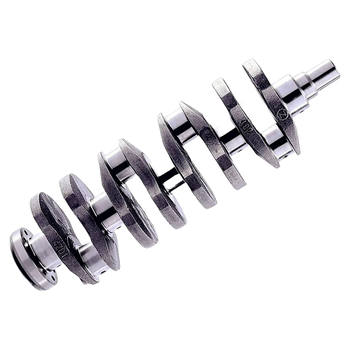
A crankshaft is the backbone of your engine, converting the up-and-down motion of the pistons into rotational energy that powers your vehicle. So, how do you know if your crankshaft is worn out? Identifying a failing crankshaft early can save you from costly engine repairs or even a complete engine replacement. This article will explore the common signs, symptoms, and solutions for dealing with a worn crankshaft.
Understanding Crankshaft Wear
Crankshaft wear occurs gradually over time due to friction, heat, and lack of lubrication. The journals, which are the polished surfaces where the connecting rods and main bearings ride, are particularly susceptible to wear. As these surfaces wear down, they create excessive clearances, compromising oil pressure and engine performance. Ignoring these early signs can lead to catastrophic engine failure.
Common Symptoms of a Worn Crankshaft
One of the most telltale signs of crankshaft wear is low oil pressure. As the crankshaft journals wear, oil leaks past the bearings, reducing the overall oil pressure in the engine. This is often accompanied by a flickering or dimly lit oil pressure warning light on your dashboard. Another prominent indicator is a knocking sound coming from the engine, particularly at lower RPMs. This knocking, often described as a deep, rhythmic thud, is caused by excessive clearance between the crankshaft journals and the bearings.
Inspecting Your Crankshaft for Wear
If you suspect a worn crankshaft, a thorough inspection is necessary. This typically involves removing the oil pan and inspecting the crankshaft journals for visible wear, scoring, or discoloration. Measuring the journal diameters with a micrometer and comparing them to the manufacturer's specifications can determine the extent of the wear. This is a job best left to a qualified mechanic, as it requires specialized tools and expertise.
The Dangers of Ignoring Crankshaft Issues
Ignoring the signs of a bad crankshaft can lead to serious engine damage. Low oil pressure starves the engine of vital lubrication, leading to increased friction and heat. This can cause bearing failure, connecting rod damage, and ultimately, complete engine seizure. The knocking sound you hear is a warning sign that metal components are colliding within your engine. Continued operation under these conditions will only exacerbate the damage and lead to more expensive repairs. Have you ever experienced a sudden loss of power while driving? This could be a sign of a failing crankshaft.
Crankshaft Grinding and Replacement: What are Your Options?
Depending on the severity of the wear, a crankshaft can sometimes be salvaged through a process called crankshaft grinding. This involves removing the crankshaft and grinding down the journals to a slightly smaller diameter. Undersized bearings are then installed to compensate for the reduced journal size. However, if the wear is excessive or the crankshaft is damaged beyond repair, a complete crankshaft replacement is necessary. This is a more involved and expensive procedure, but it's often the only option for restoring engine functionality. So, what’s the best course of action for you?
Preventing Crankshaft Wear: Proactive Maintenance
Regular oil changes are crucial for preventing crankshaft wear. Fresh oil provides adequate lubrication and helps to remove contaminants that can contribute to wear. Using the correct oil viscosity recommended by the manufacturer is also essential. Additionally, ensuring your engine cooling system is functioning properly helps prevent overheating, which can accelerate crankshaft wear.
The Importance of Professional Diagnosis
While this article provides valuable information on how do you know if your crankshaft is worn out, it's important to remember that a proper diagnosis requires professional expertise. A qualified mechanic has the tools, knowledge, and experience to accurately assess the condition of your crankshaft and recommend the appropriate course of action. Don't rely solely on DIY methods; seek professional help for any suspected engine problems.
Beyond the Crankshaft: Considering Other Potential Issues
Sometimes, symptoms similar to a worn crankshaft can be caused by other engine problems, such as worn connecting rod bearings or main bearings. A comprehensive engine diagnosis is necessary to pinpoint the exact source of the problem. This is another reason why seeking professional help is crucial. They can differentiate between crankshaft wear symptoms and other potential issues, saving you time and money in the long run.
Next Steps: Addressing Your Crankshaft Concerns
If you suspect your crankshaft is worn out, don't delay. Take your vehicle to a qualified mechanic for a thorough inspection. Early detection and intervention can save you from costly repairs and ensure the longevity of your engine. Remember, a healthy crankshaft is essential for a healthy engine. Ignoring the warning signs can lead to significant problems down the road. Don't wait until it's too late; address your crankshaft concerns today.

 The Unseen Powerhouse: Unveili
The Unseen Powerhouse: Unveili
 Unveiling the Precision: The A
Unveiling the Precision: The A
 Navigating the World of Cranks
Navigating the World of Cranks
 The Unsung Heroes: What Makes
The Unsung Heroes: What Makes
